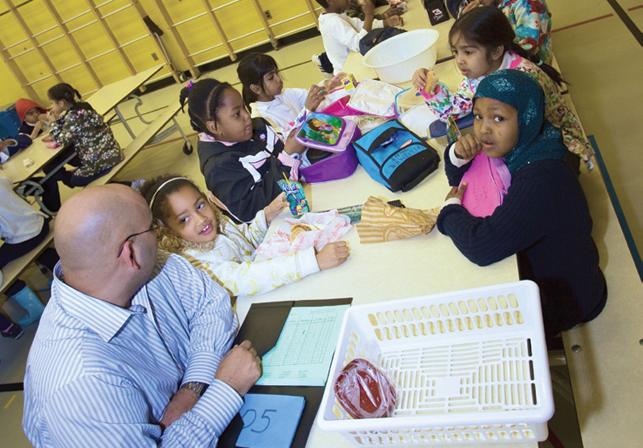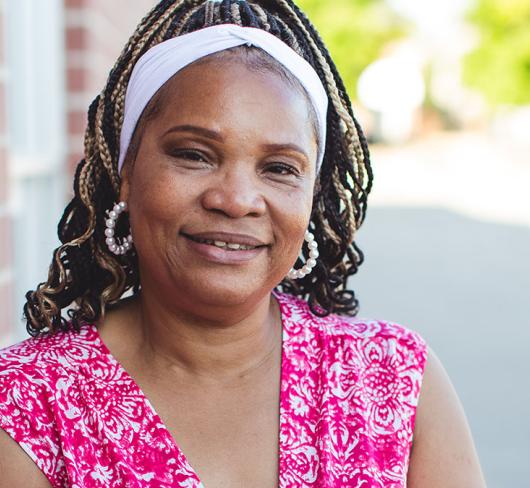
Leading and Learning With the Community
When I was a young learner there was a clearly defined understanding of the role of teachers in schooling and in their interactions with students and families. Teachers were “academic” instructors who stood or sat at a distance from us, the students. On most occasions they asked us to refer to instructions written on the board or to listen carefully to what they said. Lucky students had one of those rare teachers that conversed with them about current events. And in the rarest of moments, we were engaged in learning that was interactive and enjoyable with a teacher whose class we looked forward to attending.
Growing up in the Jane and Finch community of Toronto in the mid 1980s, I felt quite fortunate to meet friends and families from so many different countries. Their stories taught me a lot about their diverse cultural and religious beliefs, and this in turn broadened my own understanding of the world. However, I did not sense that this linguistic and cultural knowledge had any currency at school. We were always focused on “learning” that included mastering the English language and not speaking our first language.
Thankfully many scholars and educators are now urging that such cultural knowledge be recognized as assets in students and families, and this perception has changed teaching practice to some degree. Pedro Noguera and many other scholars have long called for close partnerships and collaboration between schools and communities.2
What defines the roles, responsibilities, and boundaries of an educator in supporting students? From teaching curriculum to engaging students in extracurricular activities, there are a variety of ways teachers connect and work with students that can be rewarding for both them and their students.
In my career, however, I have found that there is no better way to connect with and truly understand the diverse experiences and talents of students and their families than to be a visible member in the community where I am teaching. Interactions with students, families, and various community stakeholders can have a profound impact on the cultural sensitivity and awareness of school staff, establish trust and partnerships between the school and its community, and ultimately enhance the possibilities of student success regardless of the barriers that may exist. This is particularly important in urban or inner-city schools, which are often located in neighbourhoods that are highly diverse in their ethnocultural makeup.
THE MODEL SCHOOLS INITIATIVE
Schools must see well beyond their walls to better understand the complexities of their communities and the diverse teaching practices needed to educate our children. In 2005, the Toronto District School Board launched Model Schools for Inner Cities, an initiative built on a vision of equity and inclusiveness that specifically supports schools in high-needs neighbourhoods in Toronto.
The five essential components of the initiative laid the framework for a different kind of teaching and learning, and these have had a great impact on my work:
- innovation in teaching/learning and in school structure
- support services to meet the social, emotional, and physical well being of students
- school as the heart of the community
- research, review, and evaluation of students and programs
- commitment to share successful practice.3
In each of the inner-city neighbourhoods served by the Model Schools initiative, a number of schools serve as models and leaders for a cluster of high-needs schools. “High needs” is defined in part by the Learning Opportunities Index, which measures the challenges faced by families in their experience of public schooling.
Part of my role as model-school lead teacher at Firgrove Public School involves collaborating with administrators, school staff, and community partners to ensure that these five essential components make up the lens through which all stakeholders view teaching and learning.
A NEW TAKE ON PROFESSIONAL LEARNING
Two projects that have enabled me to bring educators together to learn more about the students they teach and the community they work in are the Faith Walk and Community Outreaching.
Co-ordinating a Faith Walk for staff from the various schools to visit the different places of worship and learn about the cultural and religious beliefs and values of their students was an important step in broadening what the teachers understood as “professional learning.” In addition to the latest literacy and numeracy initiatives from the ministry or our school board, professional learning must also encompass truly knowing our students so that we can actually teach them literacy and numeracy effectively. Staff from the cluster schools visited a number of places of worship including the Jaffari Islamic Centre in Thornhill, and the BAPS Swaminarayan complex in Etobicoke.
As part of their visit, administrators and staff were able to speak with faith leaders and address some of their own misconceptions. This experience has helped educators understand their students and families and has led them to adapt their practices to be more culturally sensitive. Whether it is putting in place religious accommodations (e.g., time for prayers, supporting students through fasting), or understanding children’s food restrictions, this type of professional learning benefits everyone.
The Community Outreaching initiative was a professional learning experience that took educators into the community to see and experience the neighbourhood their students live in and its support services. Initially some staff asked why I was organizing this excursion and whether it was mandatory. Not only is ‘’School as the heart of the community” an integral aspect of the Model School vision, it is also a strategy to shift the way some educators understand teaching and learning. We know that many curricular initiatives have come and gone with little or no impact on the achievement of students in marginalized communities. Student, community, and school failure is not accepted in middle-class communities, and we should not accept such failures in the Jane and Finch community or anywhere else. Instead, we must continue to explore and incorporate new ways of teaching that remove the systemic barriers that exist for our students.
SUPPORTING STUDENTS IN MANY WAYS
In organizing the Faith Walk and Community Outreaching programs we were responding to the urgent need to support our disengaged learners. Of course, having release time during the day to take part was beneficial, especially for those staff that questioned the projects’ premises. This was an important first step in reframing our ongoing conversation of what professional learning is. During half-day visits, staff in groups of three or four were able to go to their students’ neighbourhoods, spend time in local community centres, malls, and hospitals, and connect with community agencies and area service providers.
One teacher recalls her experience: “Families seeing us in the community were eager to share insights with
us that they felt were important. I remember thinking: I’ve worked in this neighbourhood for years and did not realize how many agencies were available to support some of my students and their families.”
NEW CONNECTIONS WITH THE COMMUNITY
As part of the outreach experience, staff returned to their schools with a formal report of where they had been and what community agencies they were now liaising with. For some, this meant seeing whether their students could read at the local seniors’ centre while others found peer mentors and big brothers/ sisters for younger students. Some staff commented on the number of homework clubs and tutoring services available at the local library and in the community centres. These experiences not only deepened their own understanding of students’ lives in the community but more importantly increased their awareness of the many services that they could connect families to.
Such perceptions are not the traditional indicators of teachers’ engagement in their professional practice. But community engagement and cultural sensitivity are particularly imperative in the urban or inner-city context if schools and communities are to move forward. I have experienced first-hand the impact these can have on student morale and on the creation of a strong foundation of trust between schools and communities. A genuinely open commitment on the part of educators to consider new perspectives in meeting students’ needs is vital to our mutual success.
I continue to be inspired by the positive relationships staff have built with students and families through such experiences and believe that we can never underestimate the power and influence these relationships have on student learning.
If students in our schools are disengaged, we must ask why and in turn put in place practices that allow all children to reach their full potential. As teachers we often talk about the “one teacher who made a difference” on our learning. We must create schools, boards and systemic structures that do what these special teachers did for us. This “culturally relevant teaching” validates student realities and reflects a continued shift towards authentic student and community engagement.
NOTES
1 Louise Brown, “Where Teachers Learn Diversity.Unusual York Program Urges Aspiring Educators to Focus on Community, Not Just the Classroom.” Toronto Star, May 21, 2008.
2 P.A. Noguera and J. Y. Wing (eds.), Unfinished Business: Closing the Racial Achievement Gap in Our Schools (San Francisco: Jossey-Bass, 2006).
3 Toronto District School Board, Model Schools for Inner Cities Task Force Report, May 2005. Available at tdsb.on.ca>Programs>Documents, Reports and Research.

